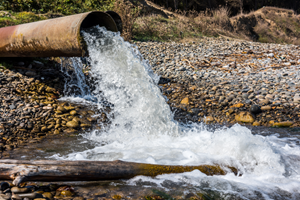Ann Arbor sends partially treated wastewater into Huron River
ANN ARBOR, Mich. (AP) — The City of Ann Arbor says an estimated 1.38 million gallons (5.2 million liters) of partially treated wastewater flowed into the Huron River during maintenance Tuesday at its treatment plant.

The wastewater had received all treatment except disinfection, the city announced Wednesday in a news release.
The city notified the Washtenaw County Health Department and Michigan Department of Environment, Great Lakes and Energy of the discharge, it said.
The discharge marked the second incident threatening the quality of the river water in a little more than two months.
The Michigan Department of Environment, Great Lakes, and Energy cited Wixom auto trim maker Tribar Manufacturing for discharging a plating solution containing hexavalent chromium into a sanitary sewer system over the weekend of July 29.
The solution ended up at a wastewater treatment facility that sends wastewater into a creek that flows into the Huron River system.
Hexavalent chromium is a known carcinogen and can cause a number of health problems if someone ingests, touches or inhales it, according to Michigan’s Department of Health and Human Services. It was part of the plot of the 2000 Julia Roberts movie “Erin Brockovich.”
Related News
From Archive

- Glenfarne Alaska LNG targets late-2026 construction start for 807-mile pipeline project
- U.S. water reuse boom to fuel $47 billion in infrastructure spending through 2035
- $2.3 billion approved to construct 236-mile Texas-to-Gulf gas pipeline
- Major water pipe break in Puerto Rico hits over 165,000 customers
- Potomac River Tunnel project enters construction phase beneath Washington, D.C.
- Pennsylvania American Water launches interactive map to identify, replace lead water service lines
- Trump's tariffs drive $33 million cost increase for Cincinnati sewer project
- Utah city launches historic $70 million tunnel project using box jacking under active rail line
- Tulsa residents warned after sewer lines damaged by boring work
- Fatal trench collapse halts sewer construction in Massachusetts; two workers hospitalized



Comments